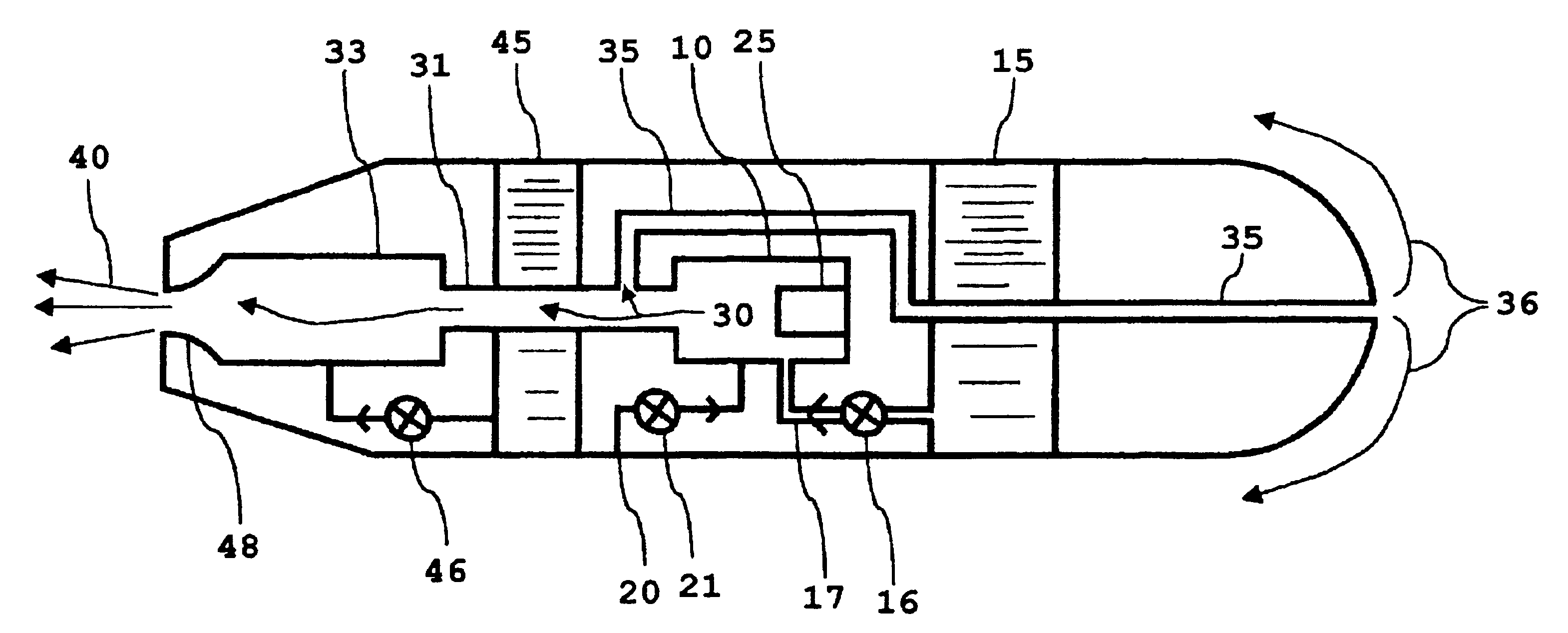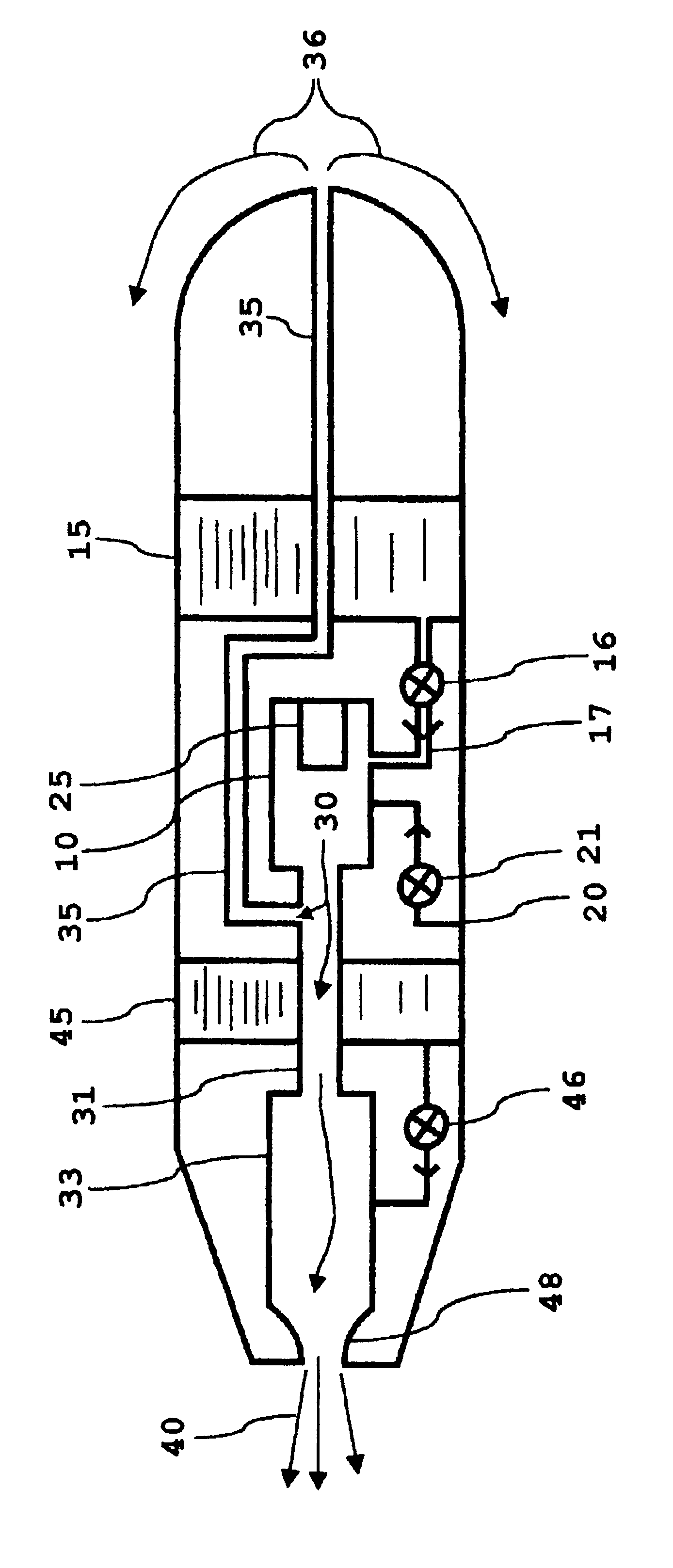Gas generating process for propulsion and hydrogen production
a technology of propulsion and hydrogen production, which is applied in the direction of looms, weaving, explosives, etc., can solve the problems of reducing the ease of ignition and energy output, and achieve the effect of reducing temperature and producing energy and hydrogen
- Summary
- Abstract
- Description
- Claims
- Application Information
AI Technical Summary
Benefits of technology
Problems solved by technology
Method used
Image
Examples
Embodiment Construction
Referring more particularly to the drawings, the underwater vehicle shown in the FIGURE utilizes gas generating processes of the present invention for continuously producing energy and hydrogen. One embodiment of these processes occurs in a first reaction chamber 10 into which are introduced the three reactants characterizing the invention. These reactants are a metallic material, an organic chemical fuel component, and an oxidizer which is predominantly water; and, for illustrative purposes in the depicted vehicle, may be considered as the reactants of a basic embodiment using aluminum metal, a hydrocarbon liquid such as jet fuel, and water.
In the depicted embodiment, the aluminum is provided in powdered form and in a slurry together with the hydrocarbon liquid, the slurry being provided from a slurry compartment from which the slurry is metered and pumped by a pump 16 into chamber 10 through a conduit 17, the pump and conduit being conventionally represented, as are similar elemen...
PUM
 Login to View More
Login to View More Abstract
Description
Claims
Application Information
 Login to View More
Login to View More - R&D
- Intellectual Property
- Life Sciences
- Materials
- Tech Scout
- Unparalleled Data Quality
- Higher Quality Content
- 60% Fewer Hallucinations
Browse by: Latest US Patents, China's latest patents, Technical Efficacy Thesaurus, Application Domain, Technology Topic, Popular Technical Reports.
© 2025 PatSnap. All rights reserved.Legal|Privacy policy|Modern Slavery Act Transparency Statement|Sitemap|About US| Contact US: help@patsnap.com


